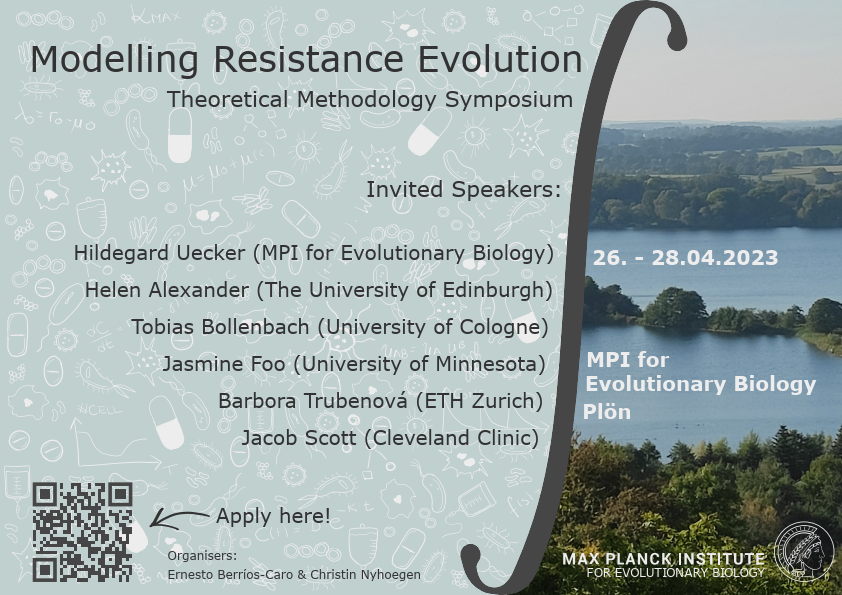Speaker
Description
Background: Fosfomycin is an old “forgotten” antibiotic that is effective against both multi-drug resistant Gram-positive and Gram-negative bacteria. In order to prevent the emergence and spread of resistances, fosfomycin is often used in combination with other antibiotics, e.g. amikacin. However, the design of effective combination therapies requires a comprehensive understanding of the underlying pharmacodynamics (PD) as well as the pharmacoresistance dynamics. Deriving such an understanding necessitates the integration of experimental and modelling approaches. Here, we aim to quantitatively characterise the growth, kill and resistance evolution dynamics of Escherichia coli under fosfomycin and amikacin exposure, as mono-treatment and in combination. Furthermore we aim to elucidate and incorporate the relationship between genomic and phenotypic resistance mechanisms. Materials/methods: Determination of the minimum inhibitory concentration (MIC), checkerboard experiments and static time-kill experiments with fosfomycin and amikacin are performed in two E. coli isolates and one reference strain. Leveraging these data, a semi-mechanistic pharmacokinetic/PD (PK/PD) model will be developed, aiming to characterise the growth, kill and regrowth behaviour, with its corresponding resistance evolution, in E. coli under fosfomycin and amikacin exposure. Results: Both clinical isolates were classified as fosfomycin resistant. The checkerboard experiments indicated the enhancement of fosfomycin’s potency by the addition of amikacin as a left shift of the bacterial concentration – fosfomycin concentration curve was observed with increasing amikacin concentration. Regrowth was observed for all fosfomycin monotherapy time-kill experiments. Mathematical modelling will be used to elucidate the phenomenon underlying the regrowth behaviour, e.g. heteroresistance, persister formation or de novo resistance evolution. These phenomena will be represented in the model as bacterial subpopulation with certain phenotypical qualities. Furthermore, as a step towards characterising the PK/PD of the combination therapy, the fosfomycin and amikacin checkerboard assay data will be used to quantitatively characterise their PD interaction using a general pharmacodynamic interaction model (GPDI) [1]. Conclusions: In this ongoing work, a semi-mechanistic PK/PD model will be developed based on the amalgamated in vitro data generated with different experimental approaches. The GPDI model will be included to capture the interaction between fosfomycin and amikacin. The developed model will serve as a tool to investigate the underlying mechanisms leading to regrowth under fosfomycin monotherapy. Using the model, we will assess the feasibility of combining fosfomycin with amikacin as a strategy to suppress regrowth and potential resistance evolution. The model derived knowledge could act as a primer to build towards mechanistically informed fosfomycin-amikacin combination treatments, optimised to supress resistance development. References [1] Wicha et al., Nat. Commun. (2017).

